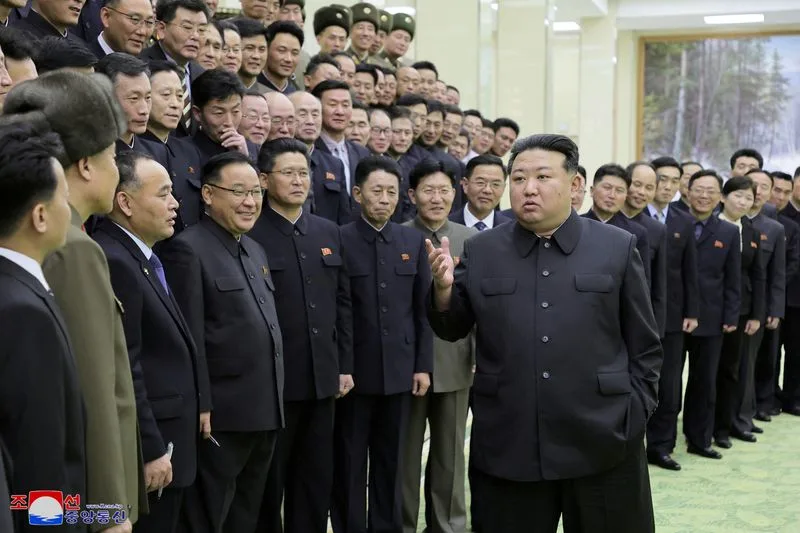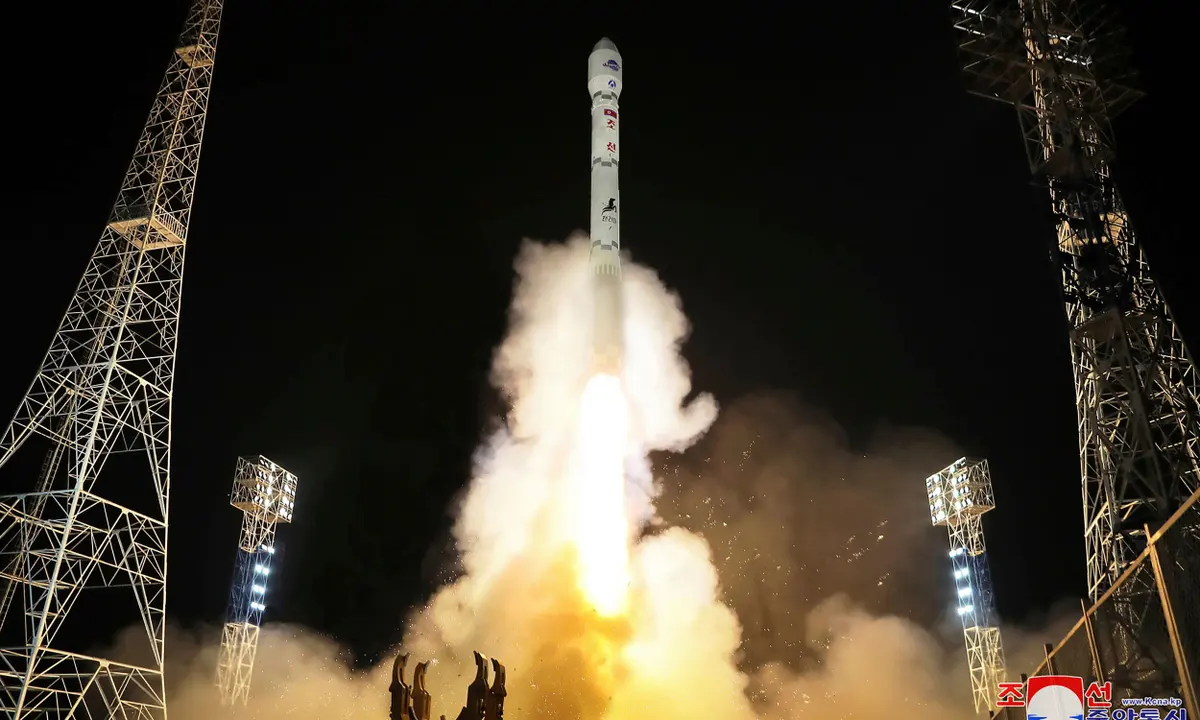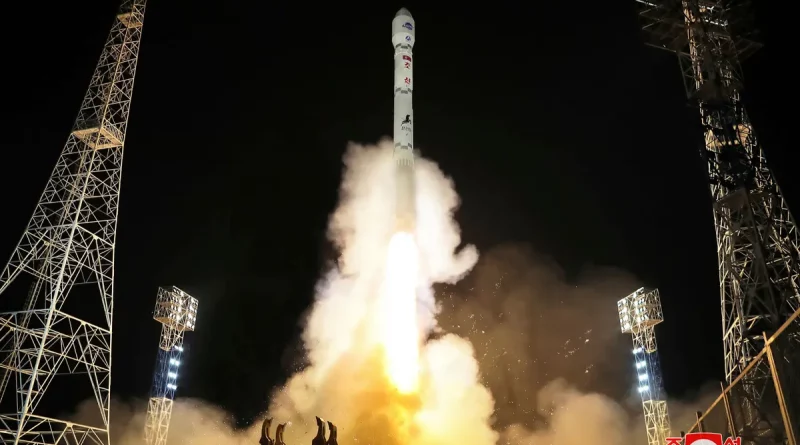North Korea says its new spy satellite photographed White House, Pentagon
In a historic move that signals North Korea’s foray into global satellite surveillance, the nation recently launched its first spy satellite, sending a clear message to the world that it is now capable of monitoring strategic locations worldwide. According to North Korean state media reports on Tuesday, leader Kim Jong Un personally reviewed satellite images capturing the White House, Pentagon, and U.S. aircraft carriers stationed at the naval base in Norfolk.
This significant development comes after decades of foreign governments and analysts closely monitoring North Korea through satellite surveillance. The successful launch of the reconnaissance satellite, announced last week, was framed by North Korea as a means to monitor military activities in both the United States and South Korea. The subsequent state media reports detailed additional targets, including cities and military bases in South Korea, Guam, Italy, and the United States capital.

Unveiling North Korea’s Surveillance Capability
Despite these claims, Pyongyang has not released any imagery captured by the satellite, leaving analysts and foreign governments to speculate on the true capabilities of this newfound surveillance technology. Chad O’Carroll, founder of the North Korea-focused website NK News, likened the situation to the excitement of receiving a cherished toy at Christmas, highlighting the anticipation surrounding the unveiling of the satellite’s potential.
South Korea, in response to North Korea’s announcement, expressed skepticism regarding the satellite’s capabilities. On Tuesday, South Korea also disclosed a delay in the launch date of its own spy satellite, scheduled to be carried into orbit by a U.S. Falcon 9 rocket. The skepticism arises from the lack of verification for North Korea’s satellite capabilities, prompting a debate among experts on the satellite’s actual imaging prowess.
Dave Schmerler, a satellite imagery expert at the James Martin Center for Nonproliferation Studies (CNS), acknowledged that even a medium-resolution camera could provide North Korea with the claimed capabilities. However, he emphasized the need for frequent passes over key sites for the satellite to be truly useful in a conflict scenario. North Korea’s space agency has indicated its pursuit of this goal by planning additional satellite launches to enhance surveillance capabilities.
Deciphering the Satellite’s Imaging Potential
Jeffrey Lewis, another researcher at CNS, speculated on the nature of the satellite images based on a state media photo showing Kim Jong Un examining them with his daughter. Lewis suggested that the images might be panchromatic, a type of black-and-white photography sensitive to all wavelengths of visible light. This inference aligns with North Korea’s previous release of panchromatic imagery of downtown Seoul after a rocket launch in December 2022.
The latest images presented by North Korean media depicted what KCNA described as “major target regions.” Kim Jong Un reportedly inspected satellite photos of Andersen Air Force Base in Guam and a U.S. shipyard and airbase in Norfolk and Newport. Notably, the images revealed the presence of four nuclear-powered aircraft carriers and a British aircraft carrier in Norfolk.
Assessing the Global Response
The United States and South Korea swiftly condemned North Korea’s satellite launch, characterizing it as a violation of U.N. Security Council resolutions that prohibit the use of ballistic technology. This condemnation underscores the geopolitical tensions surrounding North Korea’s technological advancements and its implications for global security.
Commercial imagery of the cities targeted by North Korea on November 27, the alleged date of capturing the photographs, was not immediately available. As the global community grapples with the strategic implications of North Korea’s newfound surveillance capabilities, the lack of concrete evidence leaves room for ongoing speculation about the true extent of the nation’s technological leap.

The Future of North Korea’s Satellite Surveillance
North Korea’s venture into satellite surveillance marks a significant milestone for the reclusive nation. While experts acknowledge the initial leap from zero to satellite capability, the true impact remains speculative until the world sees the images collected by North Korea’s reconnaissance satellite. The potential use cases, strategic advantages, and the level of sophistication in surveillance technology will only be fully understood once concrete evidence is presented.
As the international community closely monitors developments, North Korea’s satellite program introduces a new dimension to the geopolitical landscape. The interaction between technological advancements, global security concerns, and diplomatic responses will shape the narrative surrounding North Korea’s role in the evolving dynamics of space-based surveillance. The unfolding saga invites scrutiny, debate, and continued vigilance as nations grapple with the implications of North Korea’s bold move into the realm of global satellite espionage.



